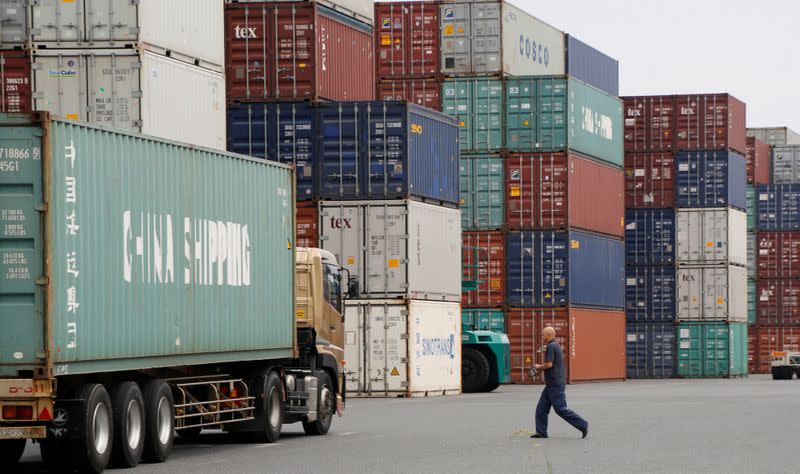Japan export decline slows dramatically as U.S.-bound car shipments jump

By Daniel Leussink
TOKYO (Reuters) - Japan's exports fell in September at the slowest pace in seven months as U.S.-bound vehicle shipments rose from lows brought about by the COVID-19 pandemic, indicating easing pressure on the world's third-largest economy.
Exports fell 4.9% in September compared with the same month a year earlier, more than the 2.4% economists forecast in a Reuters poll. Still, the pace followed six months of double-digit decline, including a 14.8% drop in August.
Fewer exports of iron to Taiwan and ships to Panama left September marking the 22nd consecutive month of export decline, the longest run since the 23-month stretch through July 1987.
To help the economy through the health crisis, the government should compile a third extra budget for the current fiscal year, economists told Reuters last week. The two earlier budgets helped fund $2.2 trillion in economic stimulus, such as cash payments to households and small business loans.
Indeed, Prime Minister Yoshihide Suga plans to order his government to compile another stimulus plan as early as November, to support consumer sentiment at risk from a new wave of COVID-19 infection, local media reported.
Still, the slowing decline in exports adds to other signs of gradual economic recovery such as a pickup in factory output.
"Production has recovered substantially, but as that's mostly a rebound after sharp falls, the recovery pace will probably slow," likely after year-end, said chief economist Yuichi Kodama at Meiji Yasuda Research Institute.
Moreover, a recovery in exports would likely have limited impact on the size of any further stimulus package given the focus will likely be on helping firms suffering from weak domestic demand, Kodama said.
By destination, shipments to the United States rose 0.7%, the first increase in 14 months, driven by stronger demand for electrical power machinery as well as passenger cars, whose numbers jumped 18%.
Exports to China, Japan's largest trading partner, rose 14.0%, the sharpest rise since January 2018. Those to Asia as a whole fell 2.0%, their slowest pace of decline since February.
Imports shed 17.2% versus the 21.4% median estimate of economists polled by Reuters, resulting in a trade surplus of 675.0 billion yen ($6.41 billion).
Marcel Thieliant, Japan economist at Capital Economics, said imports of goods and services may return to pre-virus levels until the end of 2022.
"The upshot is that after knocking three percentage points from GDP growth in Q2, net exports will support growth over the coming quarters."
($1 = 105.3700 yen)
(Reporting by Daniel Leussink; Editing by Sam Holmes and Christopher Cushing)

 Yahoo News
Yahoo News 